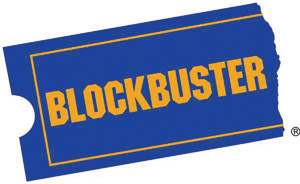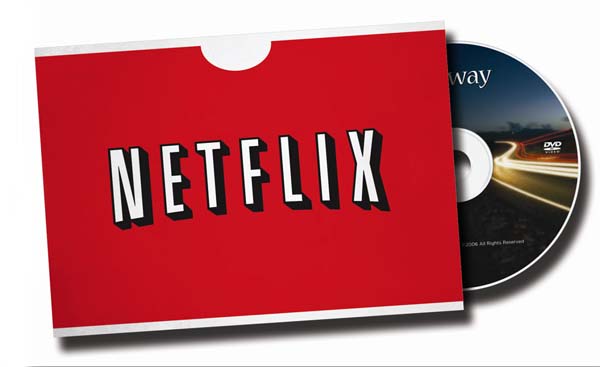
 Friends, readers, countrymen, lend me your ears; I come to bury Blockbuster, not praise it. The evil that men do lives after them; the good is oft interred with their bones. So let it be with Blockbuster. The noble Los Angeles Times hath told you Blockbuster was ambitious: If it were so, it was a grievous fault, and grievously hath Blockbuster answer’d it.
Friends, readers, countrymen, lend me your ears; I come to bury Blockbuster, not praise it. The evil that men do lives after them; the good is oft interred with their bones. So let it be with Blockbuster. The noble Los Angeles Times hath told you Blockbuster was ambitious: If it were so, it was a grievous fault, and grievously hath Blockbuster answer’d it.
An era is coming to an end, my friends. And while it is one that many of us grew up with, it is not exactly one for the ages. Video stores, coming to prominence less than 30 years ago, are now a relic of the past. Just over six months ago, Blockbuster’s chief rival, Movie Gallery – who only a few short years ago purchased the ailing Hollywood Video – filed for bankruptcy; now it is Big Blue’s turn. And with that, the three largest video-store chains in the world bite the dust. Sure, they still have stores floundering while they consolidate debt, but they have no business model to save them. The video store is dead. Long live the direct market!
To be honest, it is bittersweet news. While I have long been a voice heralding the end of the video store, specifically that of physical media, I spent six years of my life jockeying a video-store counter. Some of my best and least-favorite memories occurred at one of the several places that employed me. And to be 100 percent truthful, my worst memories were working for the soulless corporate giant Blockbuster. Having dropped the ball on DVD rentals and gotten into the game fairly late – a couple years after their competitors – they became desperate to grasp onto the next big thing. Over the course of a year’s employment I went from video-store clerk to DirecTV salesperson to having to babysit a Radio Shack kiosk placed within the store.
Blockbuster tried everything. They tested Video on Demand 10 years ago – long before the technology was ready – only to abandon it; they tried doing away with late fees, instead selling you the DVD if you kept it too long; they even copied the Netflix model, bundling it with their own in-store rentals. Nothing worked, and the chain that had once dominated the landscape – quite literally, with more stores than anyone else – crumbled under its own weight and its inability to innovate. In the end, Blockbuster proved to be a company that did one thing very well: Open stores. And when that thing was no longer what people wanted, they couldn’t make anything else work.
 Their chief problem, it would seem, was the very size of their business model – a problem facing a large number of businesses in this day and age. The new corporate model is a terrible one. Built upon the idea of “turnover” (expecting employees to come and go at a pre-determined frequency) to prevent having to pay high, livable wages and limiting the hours of its employees to avoid having to pay benefits, they kept their staff young and cheap. Better for the stockholders, you know? But when Netflix appeared with its direct mail service (and later its streaming service) and Redbox showed up with its automated supermarket kiosks, it turned out the only difference between a large metal box and a Blockbuster employee was that one was liable to mispronounce the title of the film.
Their chief problem, it would seem, was the very size of their business model – a problem facing a large number of businesses in this day and age. The new corporate model is a terrible one. Built upon the idea of “turnover” (expecting employees to come and go at a pre-determined frequency) to prevent having to pay high, livable wages and limiting the hours of its employees to avoid having to pay benefits, they kept their staff young and cheap. Better for the stockholders, you know? But when Netflix appeared with its direct mail service (and later its streaming service) and Redbox showed up with its automated supermarket kiosks, it turned out the only difference between a large metal box and a Blockbuster employee was that one was liable to mispronounce the title of the film.
One thing I learned during my time with the stores was that if you staffed your store with people who knew movies and knew how to talk about them, people would drive out of their way, past other stores even, to talk to someone who was knowledgeable and learned their taste. I had a steady stream of customers who would sometimes have my fellow employees call me at home to make recommendations or figure out the name of a film they were looking for. Every time a district manager would look at the numbers and tell my manager to “let me go” because I was making $9 an hour as opposed to the two teenagers he could get to work my shift for $5.25 each, my manager always put them in their place. He understood the value of keeping a knowledgeable crew and we became known as the store with the longest-running crew in our city. It kept our store strong, even though we were in a terrible part of town and located immediately across the street – I mean, we could see it through the windows – from both a Blockbuster and a supermarket with its own video store.
But that just isn’t the corporate way. Technology didn’t kill the video store; the corporate system did. Look around you at all the failing chains and ask yourself why you shop online. Is it just the convenience? Or is it because you know you’ll get the same level of customer service from a machine that you will from a retail employee? Just a little something to think about as Blockbuster takes its last, dying breaths.
Got $24 million? If you do, you can purchase a wad of crippling debt and the largest video-store chain there ever was.


